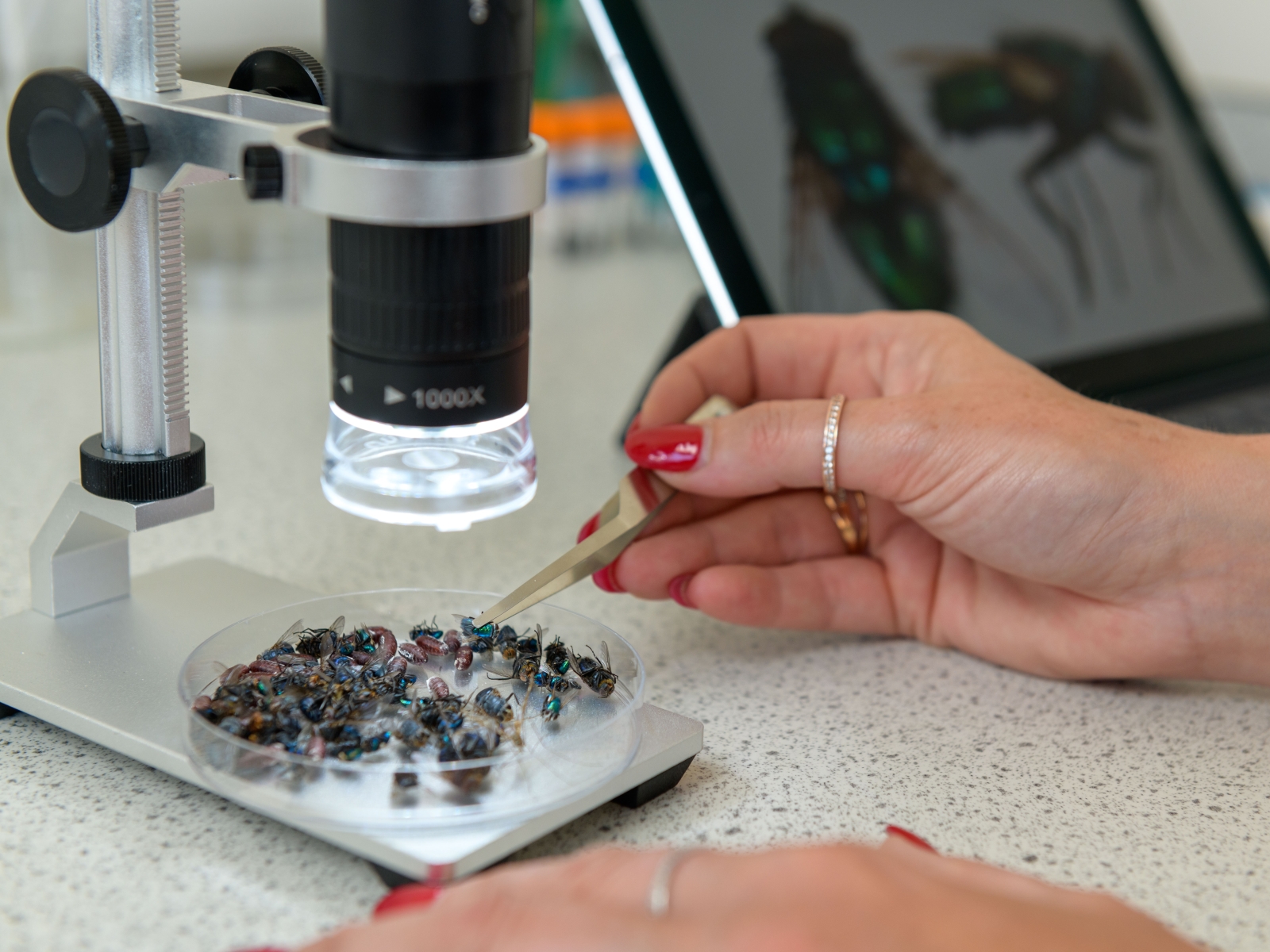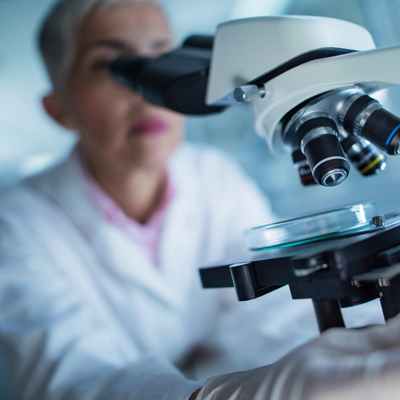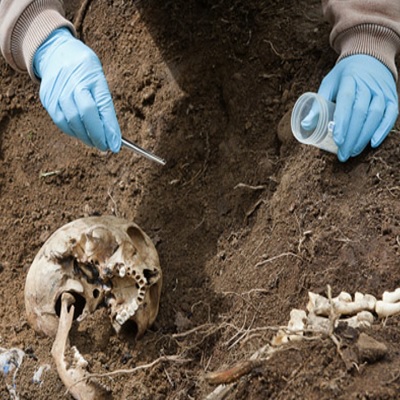Forensic entomology utilises insects that feed on dead tissue and decomposing remains to aid in legal investigations. Possible applications are investigations on mode and circumstances of death, post-mortem modifications of the body or the estimation of the time of death. The latter is performed by analysing the species composition of the necrophagous insects or by estimating the age of the juvenile insects developing on the dead body. Blow flies (Diptera: Calliphoridae) are known to be forensically important insects as they often detect and colonise the dead body shortly after death, sometimes only a few hours post-mortem. Their age then leads to the minimum post-mortem interval (PMImin), the period between the first insect colonisation and the discovery of the body.
Cranfield Forensic Institute has a forensic entomology capability allowing for criminal casework to be carried out, from crime scene to court from a reporting Forensic Entomologist.
We also offer chemotaxonomy techniques for identification of museum insect samples using gas chromatography-mass spectrometry (GC-MS).
CFI also holds a Defra licence within their outdoor taphonomy facility, which allows forensic entomology fieldwork to be carried out on decomposing remains laid out on the surface. This area can be utilised for research, professional training courses and MSc teaching.




